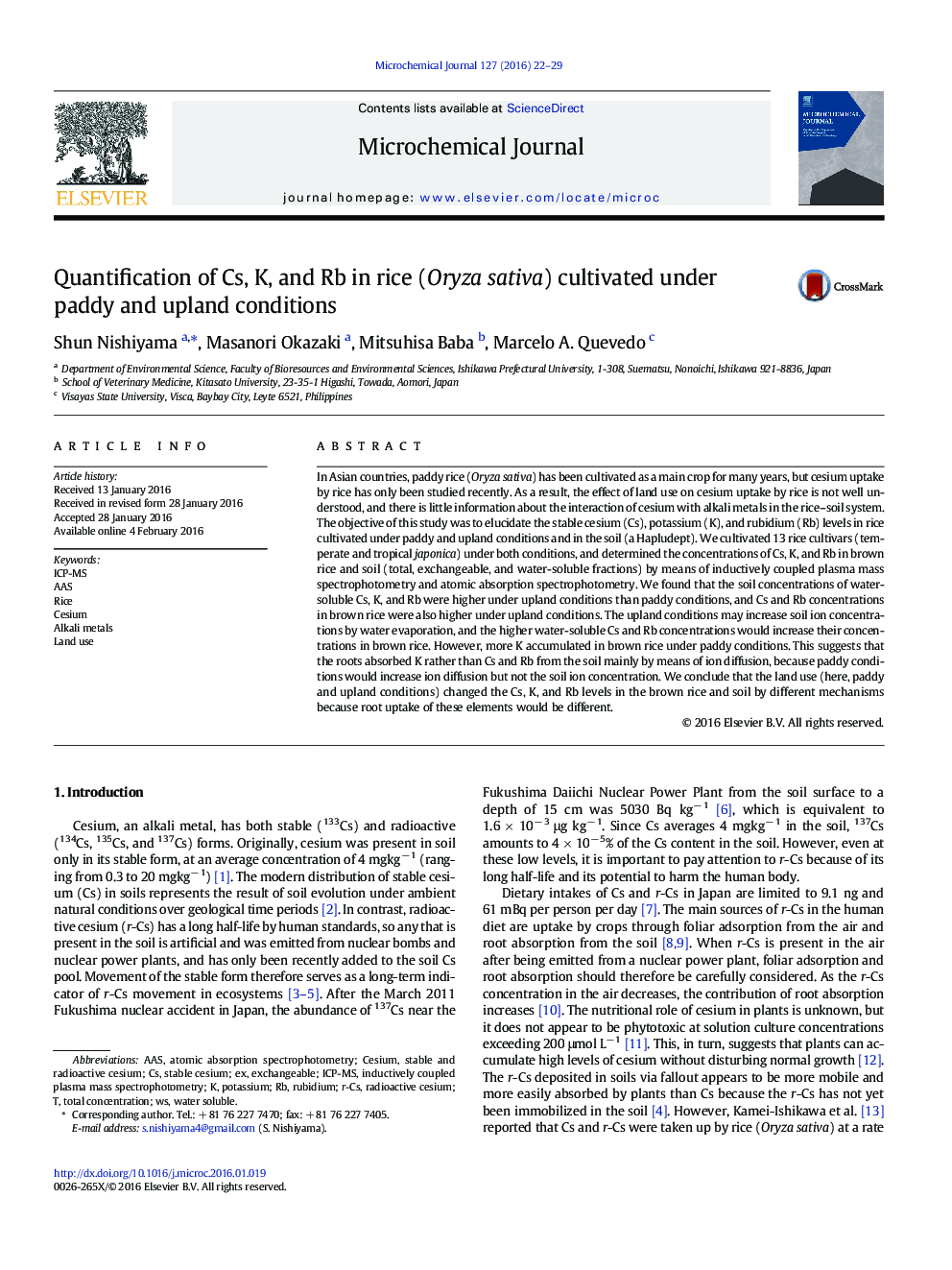| Article ID | Journal | Published Year | Pages | File Type |
|---|---|---|---|---|
| 1227496 | Microchemical Journal | 2016 | 8 Pages |
•We investigated Cs, K, and Rb in rice cultivated under paddy and upland conditions.•We quantified Cs, K, and Rb in brown rice, soil, and mica by ICP-MS and AAS.•Upland conditions increased brown rice Cs and Rb and water-soluble soil fractions.•The brown rice K concentrations were independent of the soil K concentration.
In Asian countries, paddy rice (Oryza sativa) has been cultivated as a main crop for many years, but cesium uptake by rice has only been studied recently. As a result, the effect of land use on cesium uptake by rice is not well understood, and there is little information about the interaction of cesium with alkali metals in the rice–soil system. The objective of this study was to elucidate the stable cesium (Cs), potassium (K), and rubidium (Rb) levels in rice cultivated under paddy and upland conditions and in the soil (a Hapludept). We cultivated 13 rice cultivars (temperate and tropical japonica) under both conditions, and determined the concentrations of Cs, K, and Rb in brown rice and soil (total, exchangeable, and water-soluble fractions) by means of inductively coupled plasma mass spectrophotometry and atomic absorption spectrophotometry. We found that the soil concentrations of water-soluble Cs, K, and Rb were higher under upland conditions than paddy conditions, and Cs and Rb concentrations in brown rice were also higher under upland conditions. The upland conditions may increase soil ion concentrations by water evaporation, and the higher water-soluble Cs and Rb concentrations would increase their concentrations in brown rice. However, more K accumulated in brown rice under paddy conditions. This suggests that the roots absorbed K rather than Cs and Rb from the soil mainly by means of ion diffusion, because paddy conditions would increase ion diffusion but not the soil ion concentration. We conclude that the land use (here, paddy and upland conditions) changed the Cs, K, and Rb levels in the brown rice and soil by different mechanisms because root uptake of these elements would be different.
